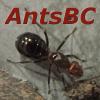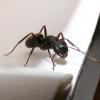- Formiculture.com
- Forums
- Gallery
- Members
- Member Map
- Chat

Formica obscuripes founding or raising?
Started By
RobertJ
, Dec 10 2018 1:34 PM
7 replies to this topic
#1
 Offline
-
Posted December 10 2018 - 1:34 PM
Offline
-
Posted December 10 2018 - 1:34 PM
Has anyone had any successful luck with founding/raising Formica obscuripes? I am interested in these guys quite a bit and can find them locally come spring/summer so I was figuring I would pick people's brains.
#2
 Offline
-
Posted December 10 2018 - 3:50 PM
Offline
-
Posted December 10 2018 - 3:50 PM
Some variations of this species' queens cannot open pupae. They are very aggressive, and I have observed nuptial flights occur in early spring (April-May). They have been recorded to fly in June and July as well. They accept queens back into the nest, so you can use F. obscuripes workers as hosts. I would grab smaller or callow workers to use though, as they are super aggressive. They store pupae in the middle of their hatch in their productive seasons, and in the winter they use the cavity to store seeds or other nuts. In the wild, they parasitize species in the Formica fusca group, so you can use workers of a species in that group as hosts as well. Although I have never personally founded them, I have colonies of these guys near my house and I like to jot down notes while I watch them. I'm not sure if queens come to the top of the nest to warm up after hibernation, but consider that as a way to catch fertile queens. They awake from hibernation and get down to egg laying very early compared to most ants as well, sometimes when there is still snow on the ground. Their seasons go very late and start very early. Furthermore, F. obscuripes does spray formic acid.
Edited by AntsBC, December 10 2018 - 4:00 PM.
#3
 Offline
-
Posted December 11 2018 - 8:21 AM
Offline
-
Posted December 11 2018 - 8:21 AM
As AntsBC said, they can be difficult to get going. The best success chances seem to come from having a sacrificial Formica colony that you can slowly introduce the Formica obscuripes queen to. When introducing the new queen, I have seen the honey bee method of exposing the new queen to the colony with a mesh barrier for an amount of time that allows the colony to get use to the new queen working better than just dumping the new queen in and hoping for the best.
You may be able to replicate this process by gathering a bunch of Formica workers that can act as a host colony for the F. obscuripes queen until she can get her own brood established. Either way, they are more work than a normal ant colony to get going, and from my experience in the field of dealing with this aggressive species, aren't a top species, at least for me, to keep in my home.
Current Colony:
4x Camponotus (hyatti?)
____________________________________________________
Harmony with land is like harmony with a friend; you cannot cherish his right hand and chop off his left.
-Aldo Leopold
#4
 Offline
-
Posted December 11 2018 - 1:36 PM
Offline
-
Posted December 11 2018 - 1:36 PM
So let me get the basics right:
Queens of Formica obscuripes can't establish new colonies alone, like carpenter ant queens can.
They need host workers after mating, then, like workers from an already established obscuripes colony?
Do we know if collecting 10-15 workers is enough for a new queen using CallmeCraven's "honeybee method?"
Edited by CampoKing, December 11 2018 - 1:40 PM.
#5
 Offline
-
Posted December 11 2018 - 2:19 PM
Offline
-
Posted December 11 2018 - 2:19 PM
They don’t need workers from an existing Formica obscuripes colony. They can have fusca group species as hosts as well. Got a queen of this species introduced to host workers using the fridge method. Sold the colony though.
#6
 Offline
-
Posted December 11 2018 - 3:20 PM
Offline
-
Posted December 11 2018 - 3:20 PM
They don’t need workers from an existing Formica obscuripes colony. They can have fusca group species as hosts as well. Got a queen of this species introduced to host workers using the fridge method. Sold the colony though.
I'm just thinking, if one of us catches an obscuripes queen, then obscuripes workers must logically be the easiest to get. I'm assuming obscuripes satisfies the general fusca requirement.
#7
 Offline
-
Posted December 11 2018 - 3:46 PM
Offline
-
Posted December 11 2018 - 3:46 PM
They don’t need workers from an existing Formica obscuripes colony. They can have fusca group species as hosts as well. Got a queen of this species introduced to host workers using the fridge method. Sold the colony though.
I'm just thinking, if one of us catches an obscuripes queen, then obscuripes workers must logically be the easiest to get. I'm assuming obscuripes satisfies the general fusca requirement.
Strangely, I’ve never actually seen a wild colony of Formica obscuripes, and have only seen other parasitic Formica sp.
#8
 Offline
-
Posted December 12 2018 - 7:50 AM
Offline
-
Posted December 12 2018 - 7:50 AM
They don’t need workers from an existing Formica obscuripes colony. They can have fusca group species as hosts as well. Got a queen of this species introduced to host workers using the fridge method. Sold the colony though.
I'm just thinking, if one of us catches an obscuripes queen, then obscuripes workers must logically be the easiest to get. I'm assuming obscuripes satisfies the general fusca requirement.
I think this would work, but your success chances are probably better with more passive Formica fusca species.
- AntsBC likes this
Current Colony:
4x Camponotus (hyatti?)
____________________________________________________
Harmony with land is like harmony with a friend; you cannot cherish his right hand and chop off his left.
-Aldo Leopold
1 user(s) are reading this topic
0 members, 1 guests, 0 anonymous users

















